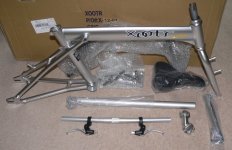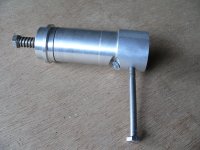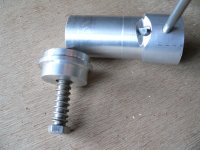Jeremy Harris
100 MW
One of the joys of having milling machines in the workshop!
The cut outs for the DB25s could be cut by hand, if you decided to use three bits of plastic rather than two. The middle bit would have a slot that was a clearance fit for the whole connector, with the outer bits having slots just big enough for the back of each one. I drilled and tapped holes in the Delrin for the screws, but you could just as easily fit longer screws with nuts on the back. The blocks were clamped together and drilled/milled as a pair, to ensure perfect alignment. The holes for the high current pins were drilled undersize and then reamed to a very tight push fit. I'm planning on adding some adhesive on the back to make doubly sure that these connectors stay in place.
The cut outs for the DB25s could be cut by hand, if you decided to use three bits of plastic rather than two. The middle bit would have a slot that was a clearance fit for the whole connector, with the outer bits having slots just big enough for the back of each one. I drilled and tapped holes in the Delrin for the screws, but you could just as easily fit longer screws with nuts on the back. The blocks were clamped together and drilled/milled as a pair, to ensure perfect alignment. The holes for the high current pins were drilled undersize and then reamed to a very tight push fit. I'm planning on adding some adhesive on the back to make doubly sure that these connectors stay in place.









